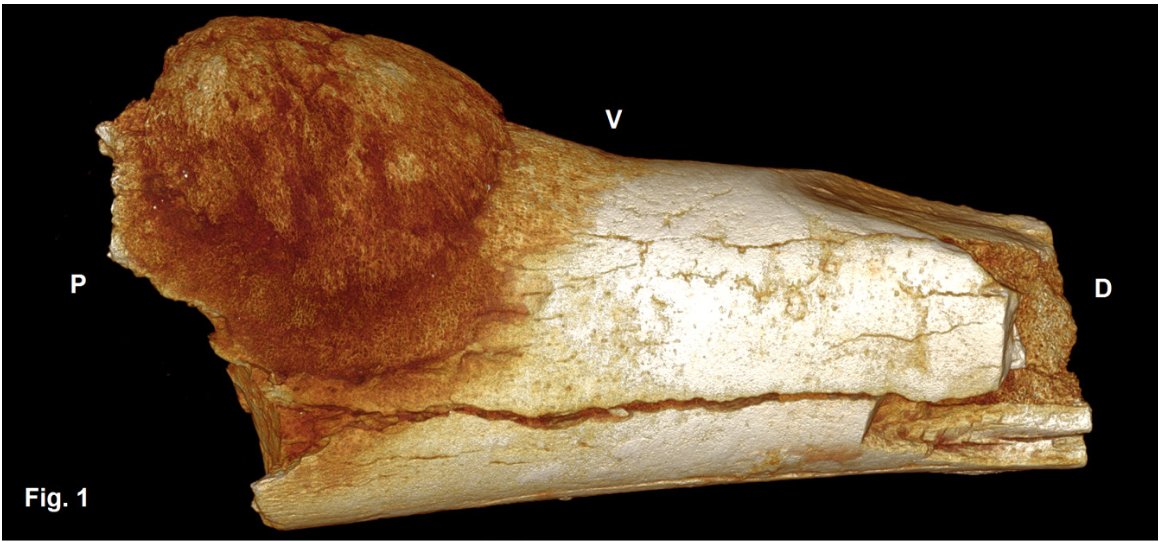
While it is often thought of as a modern disease, it is clear that cancer has been plaguing humans and their ancestors since the beginning of humankind.
One of the oldest known cancers affecting a hominin is the osteosarcoma shown above. Osteosarcoma is a type of bone cancer. It is shown growing on the the 5th metatarsal (a bone in the foot) of a human ancestor who lived about 1.7 million years ago. The bone was found in the Swartkans cave in South Africa.1
There is also evidence for an even older but non-cancerous tumor found in hominins. The skeleton of a young male Australopithecus sediba from Malapa, South Africa showed evidence of a tumor in his sixth thoracic vertebra.2 This growth is thought to have arisen almost 2 million years ago. Based on the characteristics of the growth and the patient, the tumor is thought to most likely be osteoid osteoma, a benign bone-forming tumor that more commonly affects males and those in their 20s.
- 1 Odes EJ, Randolph-Quinney PS, Steyn M, Throckmorton Z, Smilg JS, Zipfel B, et al. Earliest hominin cancer: 1.7-million-year- old osteosarcoma from Swartkrans Cave, South Africa. S Afr J Sci. 2016;112(7/8), Art. #2015-0471, 5 pages. http://dx.doi. org/10.17159/sajs.2016/20150471 [Earliest hominin cancer: 1.7-million-year- old osteosarcoma from Swartkrans Cave, South Africa.]
- 2 Randolph-Quinney PS, Williams SA, Steyn M, Meyer MR, Smilg JS, Churchill SE, et al. Osteogenic tumour in Australopithecus sediba: Earliest hominin evidence for neoplastic disease. S Afr J Sci. 2016;112(7/8), Art. #2015- 0470, 7 pages. http://dx.doi.org/10.17159/sajs.2016/20150470 [Osteogenic tumour in Australopithecus sediba: Earliest hominin evidence for neoplastic disease.]
